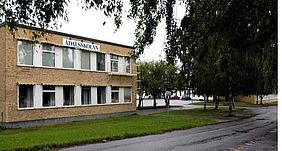Krambo is a municipal housing company/real estate owner for public purposes in Sweden. They are associated partners in SMARCTIC, attached to the Association of Local Authorities Västernorrland. Krambo will serve as a test bed and demonstrator for the SMART energy management services that will be piloted in their public-school building Ådalsskolan.
Thanks to the opportunity that SMARCTIC brings, ALAV will benefit from the use of SMART technologies to measure, monitor and improve energy efficiency. "The aim for Krambo is to be able to use the SMARCTIC pilot results for their entire stock of buildings within the municipality to minimize overall energy usage. Furthermore, it will make possible to invite students and staff of Ådalsskolan to take part in the use case measurements, through physical displays or other interfaces, for learning and becoming aware of energy and how to decrease consumption by their own behavior", explains Ingela Lingensjö Project Manager at ALAV.
The success of the SMARCTIC project lies in its ‘whole-community’ approach to reducing total energy usage within particular geographic areas. "SMARCTIC provides an integrated platform that allows citizens, universities, companies and public authorities to work together in their community to reduce energy usage. With this use case, Swedish partners will work together with Krambo and students & staff at Ådalsskolan to adapt Smart City models and digital transformation technologies", mentions Project Leader Juanita Blue.
Swedish project partners are planning to set up a use case that will be performed in two stages:
- Stage 1: ALAV will measure the total energy consumption for the defined area/classrooms. Separately, they will measure the energy consumption for the lighting and the energy consumption for the ventilation.
- Stage 2: they will replace the lighting with smarter products that give the students enough light, but reduces the energy consumption. They will also find and implement a solution for intelligent airflow management/demand-controlled ventilation and they will invite students and staff to participate in the measurements during the project and use the expertise acquired for teaching purposes.

